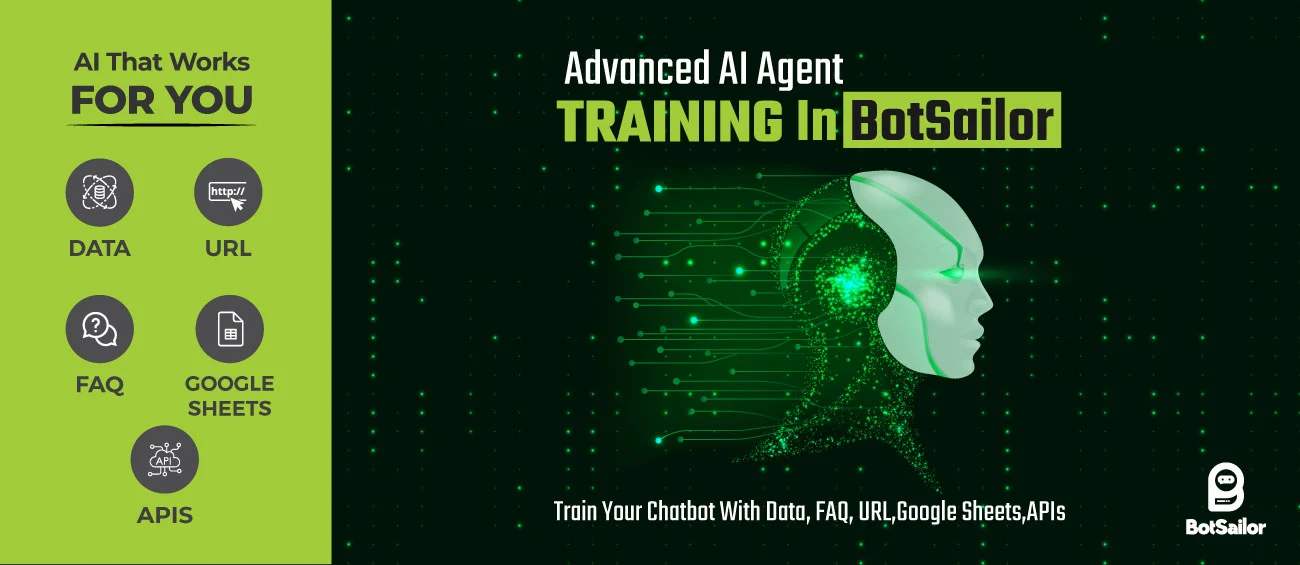How to Create WordPress Users via HTTP API Integration with BotSailor for WhatsApp
Integrating external APIs into chatbot workflows can significantly enhance automation and streamline user experiences. In this blog, we’ll walk through how to set up and use HTTP API integration in BotSailor to automatically create WordPress user accounts through WhatsApp.
By connecting WordPress with BotSailor via HTTP API, businesses can automate user registrations, provide instant feedback to users, and deliver a seamless onboarding experience without manual intervention. Let’s dive into the step-by-step process to achieve this integration.
Benefits of Integrating WordPress and BotSailor via API
Before jumping into the technical steps, here are a few key benefits of integrating WordPress user creation with BotSailor via API:
- Automation: Automate the user registration process, saving time and minimizing human errors.
- Instant Feedback: Send real-time responses to users after registration.
- Seamless Workflow: Create a streamlined process for both admins and users by integrating WordPress directly into BotSailor’s chatbot flow.
Step 1: Setting Up the HTTP API in BotSailor
Access the API Section:
- In your BotSailor dashboard, navigate to the "WhatsApp HTTP API" section. (From the left navigation menu, select "Integration" or "Settings". There you will find "HTTP API". Click on it, and then select "WhatsApp HTTP API")
- Click "Create" to set up a new API connection.
Configure API Details:
- API Name: Name your API connection, such as "WordPress User Create Demo".
- Method: Set the method to POST since we are sending data to create a new user.
- Endpoint URL: Input the WordPress REST API endpoint for user creation:
https://yourwebsite.com/wp-json/wp/v2/users
Step 2: Setting Up the Headers
For this integration, WordPress uses Basic Authentication with an application password. You need to include your WordPress username and an application-specific password encoded in Base64 format in the headers.
Authorization with Application Password
WordPress Application Passwords are a secure way to allow external services like BotSailor to interact with your WordPress site. Here’s how to generate an application password:
- Log into WordPress: Go to your admin dashboard.
- Navigate to User Profile: Go to Users > Your Profile.
- Generate Application Password: In the Application Passwords section, give your integration a name (e.g., "BotSailor API") and generate the password.
- Save the Password: Copy and save the password, as you will not be able to view it again.
Encode Username and Password in Base64
To use this password in your API, you need to encode your username:application_password string in Base64. Here’s how:
- If your username is
adminand your application password is1234567890abcdef, you’ll need to encode the stringadmin:1234567890abcdef.
You can use various online tools for Base64 encoding:
Once encoded, it will look like this:
YWRtaW46MTIzNDU2Nzg5MGFiY2RlZg==
Add the Headers in BotSailor
Header Key:
Content-Type
Header Value:application/jsonHeader Key:
Authorization
Header Value:Basic
Authorization: Basic YWRtaW46MTIzNDU2Nzg5MGFiY2RlZg==
Step 3: Configuring Body Data for API Request
In the Body Data section of the BotSailor API configuration, you need to map the fields that will be sent to WordPress to create the user. Common fields include:
- username: (e.g., phone number from the chatbot input).
- name: (e.g., full name from user input).
- email: (dynamically captured email).
- password: Static or dynamically generated.
- roles: Set this to
subscriberor any other role as per your requirement.
You can map static values or dynamic values collected from the chatbot conversation (such as a user’s email or name).
Step 4: Verifying the API
Once you've configured the API, click "Verify Connection" to ensure everything is set up correctly. If the connection is successful, BotSailor will confirm that the API endpoint is reachable, and the data is being sent properly.
Step 5: Creating the Flow in BotSailor’s Flow Builder
Start the Bot Flow:
- Create a new bot flow and add a trigger, such as a keyword (
WPAPITest) that users can type to start the flow.
- Create a new bot flow and add a trigger, such as a keyword (
User Input:
- Add a User Input Flow to collect the user’s information, such as their email address or name. Save this data into custom fields.
Text Message:
- Send a confirmation message to the user, such as:
Thanks for your email. We are creating your WordPress account, please wait a moment.
- Send a confirmation message to the user, such as:
Trigger the API Call:
- Add the HTTP API action in the flow. Map the user input (such as email, username, etc.) to the appropriate fields in the API request body.
Send Success Confirmation:
- After the API call, send a message confirming the account creation:
Hi, your WordPress account has been created. Your username is: #WordPressUserId# and your default password is: 123456.Here WordPressUserIdis a custom field inside BotSailor.
- After the API call, send a message confirming the account creation:
Step 6: Testing the Flow
Once the API is set up, run tests by interacting with your chatbot to see if the user account is being created on WordPress. Ensure that all user input fields are correctly captured and sent to the API.
Conclusion
By integrating WordPress’s API with BotSailor, you can fully automate the user registration process directly through WhatsApp. This not only saves time but also provides users with a smooth onboarding experience, all while ensuring the data is properly synced across platforms. For more details on setting up API integration in BotSailor, check out our HTTP API Integration Guide.
This integration opens up new possibilities for automating workflows, reducing manual tasks, and improving overall user experience.
Related Topics :
BotSailor HTTP API Integration Guide





(0) Comments